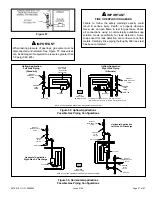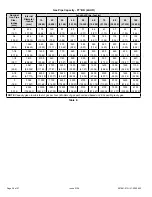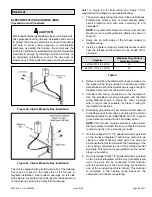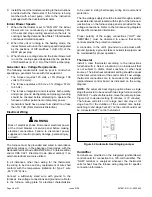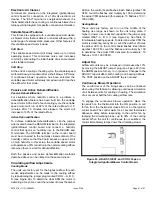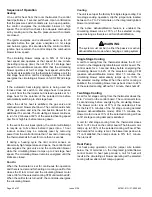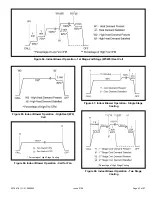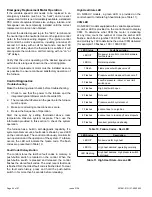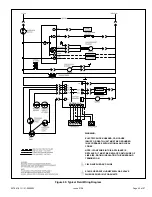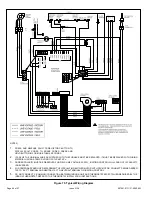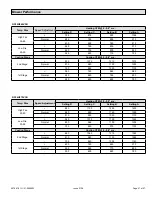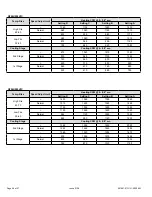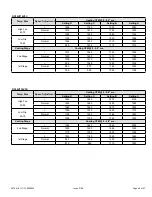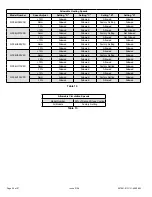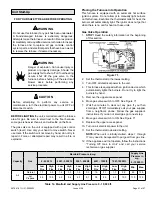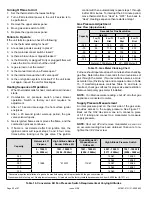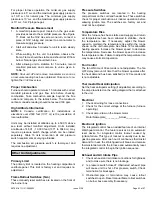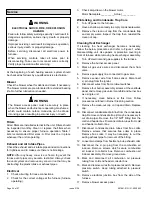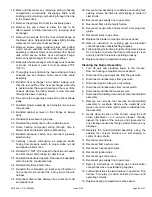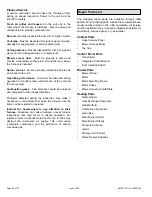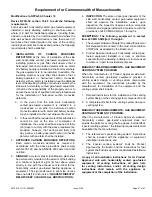
507961-01G / 31-5000653
Page 51 of 57
Issue 2128
Unit Start-Up
FOR YOUR SAFETY READ BEFORE OPERATING
Do not use this furnace if any part has been underwater.
A flood-damaged furnace is extremely dangerous.
Attempts to use the furnace can result in fire or explosion.
Immediately call a qualified service technician to inspect
the furnace and to replace all gas controls, control
system parts, and electrical parts that have been wet or
to replace the furnace, if deemed necessary.
WARNING
Danger of explosion. Can cause injury or
product or property damage. Should the
gas supply fail to shut off or if overheating
occurs, shut off the gas valve to the
furnace before shutting off the electrical
blower deck, before performing any
service procedure.
WARNING
Before attempting to perform any service or
maintenance, turn the electrical power to unit OFF at
disconnect switch.
CAUTION
BEFORE LIGHTING
the unit, smell all around the furnace
area for gas. Be sure to smell next to the floor because
some gas is heavier than air and will settle on the floor.
The gas valve on the unit is equipped with a gas control
switch (lever). Use only your hand to move switch. Never
use tools. If the switch will not move by hand, do not try to
repair it. Force or attempted repair may result in a fire or
explosion.
Placing the Furnace into Operation
This furnace is equipped with an automatic hot surface
ignition system. Do not attempt to manually light burners
on this furnace. Each time the thermostat calls for heat, the
burners will automatically light. The ignitor does not get hot
when there is no call for heat on these units.
Gas Valve Operation
1.
STOP!
Read the safety information at the beginning
of this section.
Figure 71.
2. Set the thermostat to the lowest setting.
3. Turn OFF all electrical power to the unit.
4. This furnace is equipped with an ignition device which
automatically lights the burners. Do not try to light the
burners by hand.
5. Remove the upper access panel.
6. Move gas valve switch to OFF. See Figure 71.
7.
Wait five minutes to clear out any gas. If you then
smell gas, STOP! Immediately call your gas supplier
from a neighbor’s phone. Follow the gas supplier’s
instructions. If you do not smell gas go to next step.
8. Move gas valve switch to ON. See Figure 71.
9. Replace the upper access panel.
10. Turn on all electrical power to the unit.
11. Set the thermostat to desired setting.
NOTE:
When unit is initially started, steps 1 through
11 may need to be repeated to purge air from gas line.
12. If the appliance will not operate, follow the instructions
“Turning Off Gas to Unit” and call your service
technician or gas supplier.
Capacity
Gas
Manifold Pressure in w.g.
Supply Line
Pressure in
w.g.
0 - 10000 ft.
0 - 4500 ft.
4501 - 5500 ft.
5501 - 6500ft.
6501 - 7500ft.
7501-10000ft.
Low
Fire
High
Fire
Low
Fire
High
Fire
Low
Fire
High
Fire
Low
Fire
High
Fire
Low
Fire
High
Fire
Min.
Max.
All
Natural
1.7
3.5
1.6
3.3
1.5
3.2
1.5
3.1
1.7
3.5
4.5
13.0
Lp/
Propane
4.5
10.0
4.2
9.4
4.0
9.1
3.9
8.9
4.5
10.0
11.0
13.0
Table 14.
Manifold and Supply Line Pressure 0 - 10,000 ft.

